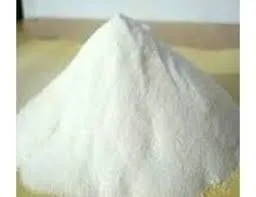
ທ.ວ. . 25, 2024 10:36 Back to list
Exploring the Properties and Applications of HPMC Polymer in Modern Industries
Understanding HPMC Polymers Properties, Applications, and Advantages
Hydroxypropyl Methylcellulose (HPMC) is a cellulose derivative widely utilized in various industries due to its unique properties and versatile applications. This polymer is derived from plant cellulose and has been modified to enhance its performance in different environments. HPMC has gained importance, especially in pharmaceuticals, food, construction, and cosmetics, owing to its excellent thickening, emulsifying, and film-forming properties.
Properties of HPMC
HPMC is a white, odorless powder that is soluble in water, forming a transparent gel-like solution. Its solubility and viscosity can be adjusted by altering the degrees of hydroxypropyl and methoxy substitution during the manufacturing process. This versatility makes HPMC suitable for different applications. The viscosity of HPMC solutions can range from low to high, allowing manufacturers to select the appropriate grade according to the specific requirements of their products.
In addition to its solubility and viscosity characteristics, HPMC is chemically stable, resistant to heat and acids, and has a high tolerance for varying pH levels. These features ensure that HPMC-based products maintain their effectiveness even under challenging conditions. Moreover, HPMC is non-toxic, biodegradable, and environmentally friendly, making it an ideal choice for applications where safety and sustainability are paramount.
Applications of HPMC
1. Pharmaceutical Applications HPMC is commonly utilized in the pharmaceutical industry as a binder, film former, and controlled-release agent in tablet formulations. Its ability to form a gel in the presence of water allows it to regulate the release of active ingredients, improving the bioavailability of drugs. Additionally, HPMC is often used in ophthalmic solutions as a lubricant due to its viscosity and biocompatibility.
2. Food Industry In the food sector, HPMC is employed as a thickener, stabilizer, and emulsifier. It helps improve the texture and mouthfeel of various food products, including sauces, dressings, and ice creams. HPMC’s ability to retain moisture also contributes to improving the shelf life of baked goods, making it a popular ingredient in gluten-free formulations.
hpmc polymer

3. Construction Industry HPMC is a crucial additive in construction materials, including mortars, plasters, and tile adhesives. It enhances workability, adhesion, and water retention, allowing for improved application properties and extending the open time of these materials. The use of HPMC in construction provides efficient solutions for both professionals and DIY enthusiasts.
4. Cosmetics and Personal Care In cosmetics, HPMC is utilized for its thickening and film-forming properties. It is often found in creams, lotions, and gels, where it improves the product texture and stability. HPMC not only enhances the performance of these formulations but also ensures that they remain effective for extended periods.
Advantages of HPMC
The advantages of HPMC make it an integral component in many products across different industries. One of its key benefits is its adaptability. Manufacturers can tailor the viscosity and gel-forming properties of HPMC to suit various formulations, ensuring optimal performance.
Furthermore, HPMC's non-toxic nature makes it safe for use in food and pharmaceutical applications, providing consumers with peace of mind regarding their health and safety. Its biodegradability adds to its appeal in an environmentally conscious world, as industries increasingly seek sustainable alternatives.
HPMC also simplifies manufacturing processes. Its good blending properties allow it to mix easily with other ingredients, facilitating the creation of stable formulations. This can lead to improved product consistency and quality, ultimately enhancing consumer satisfaction.
Conclusion
In summary, Hydroxypropyl Methylcellulose (HPMC) is a versatile polymer with a wide range of applications across multiple industries. Its favorable properties, including solubility, viscosity, and safety, make it an ideal choice for manufacturers looking to enhance their products. As industries continue to innovate and prioritize sustainability, HPMC's role is expected to grow, solidifying its status as a crucial component in modern formulation technologies. Whether in pharmaceuticals, food, construction, or cosmetics, HPMC is undoubtedly a polymer that meets the demands of today’s consumer-driven market.
-
Versatile Hpmc Uses in Different Industries
NewsJun.19,2025
-
Redispersible Powder's Role in Enhancing Durability of Construction Products
NewsJun.19,2025
-
Hydroxyethyl Cellulose Applications Driving Green Industrial Processes
NewsJun.19,2025
-
Exploring Different Redispersible Polymer Powder
NewsJun.19,2025
-
Choosing the Right Mortar Bonding Agent
NewsJun.19,2025
-
Applications and Significance of China Hpmc in Modern Industries
NewsJun.19,2025







